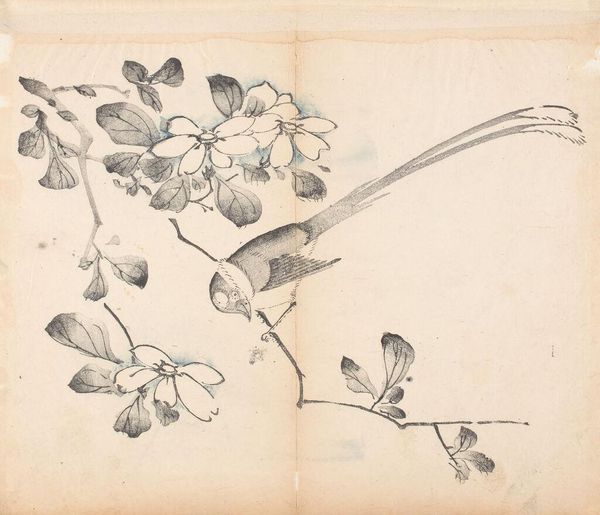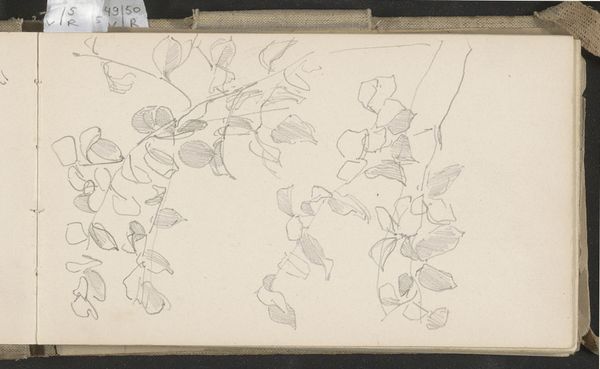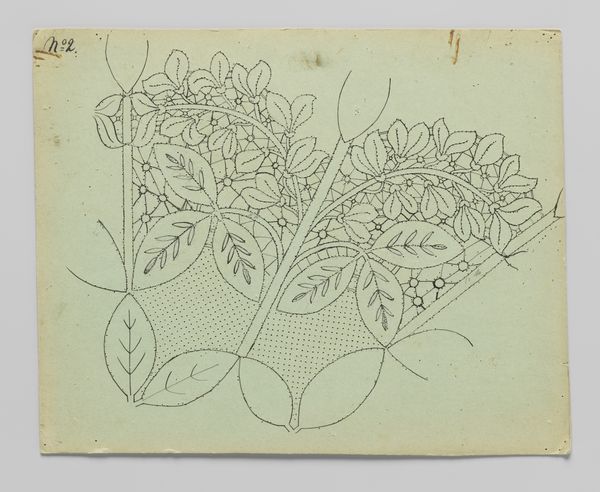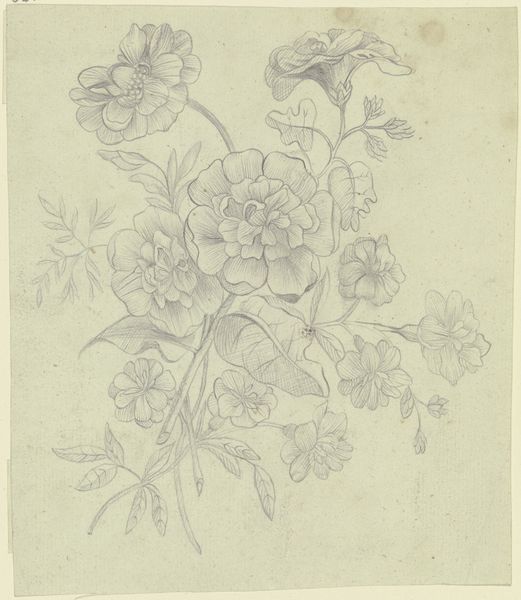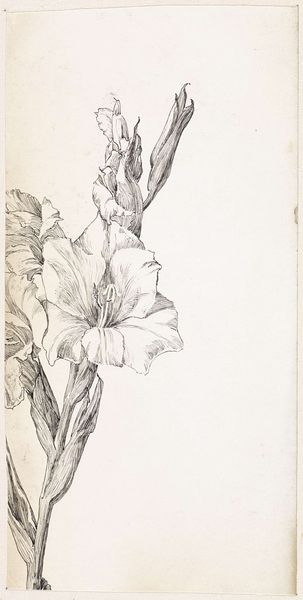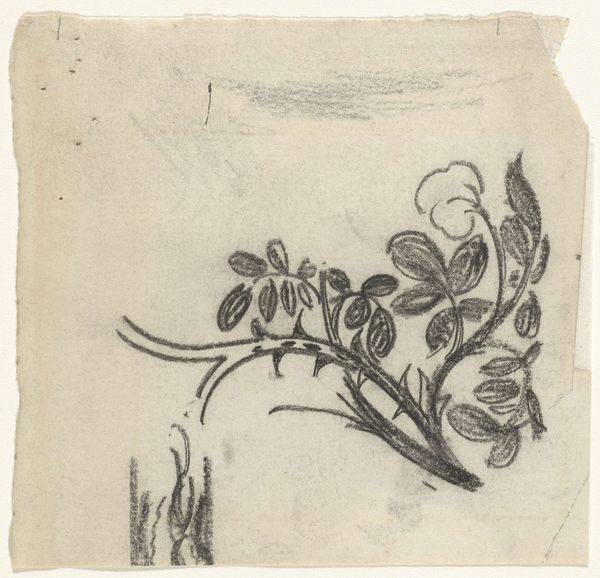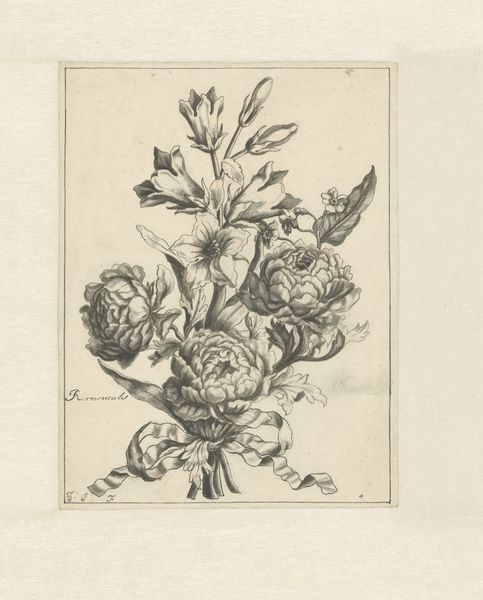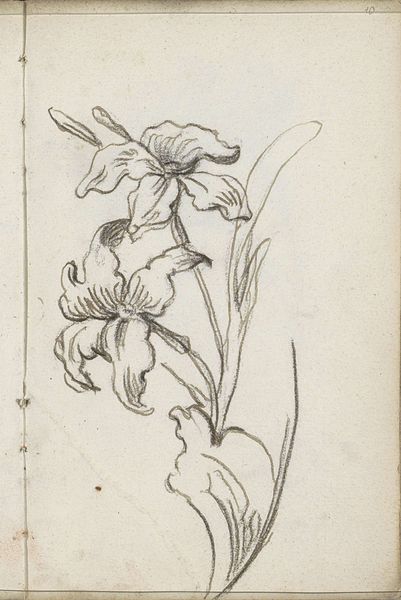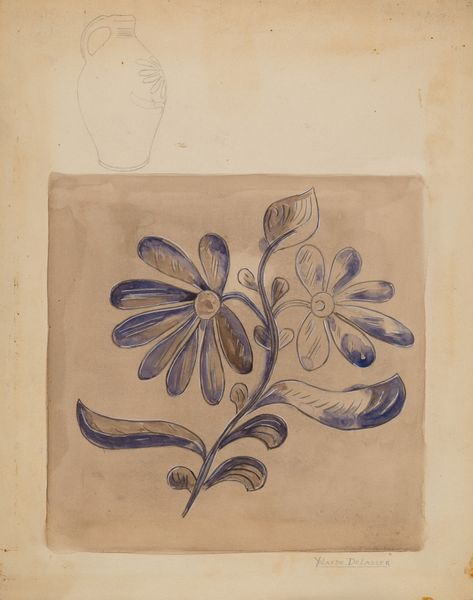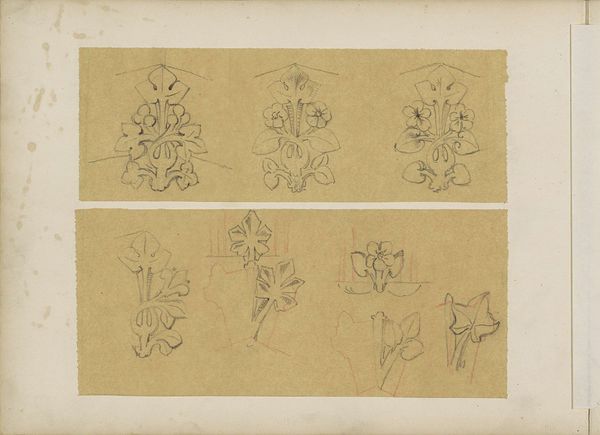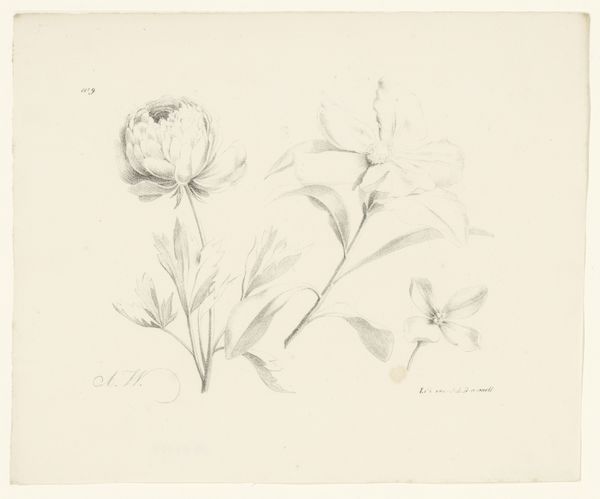
Copyright: Rijks Museum: Open Domain
Petrus Johannes van Reysschoot created this soft, graphite drawing of a flower, titled "Bloem," sometime in the 18th century. In this period, botanical art and scientific illustration flourished, driven by Europe's colonial expansion and the desire to document and classify the natural world. Yet, van Reysschoot's sketch invites a gentler gaze. The flower isn't pinned down for study but seems to float ethereally on the page. There's a sense of intimacy, as if the artist paused to capture the bloom's delicate beauty. Consider the tulip, a symbol of luxury during the Dutch Golden Age, with its own history of speculation and commodification. Here, it is rendered with humility and quiet observation. Van Reysschoot offers us a moment to reflect on the simple, yet profound beauty of the flower.
Comments
No comments
Be the first to comment and join the conversation on the ultimate creative platform.


